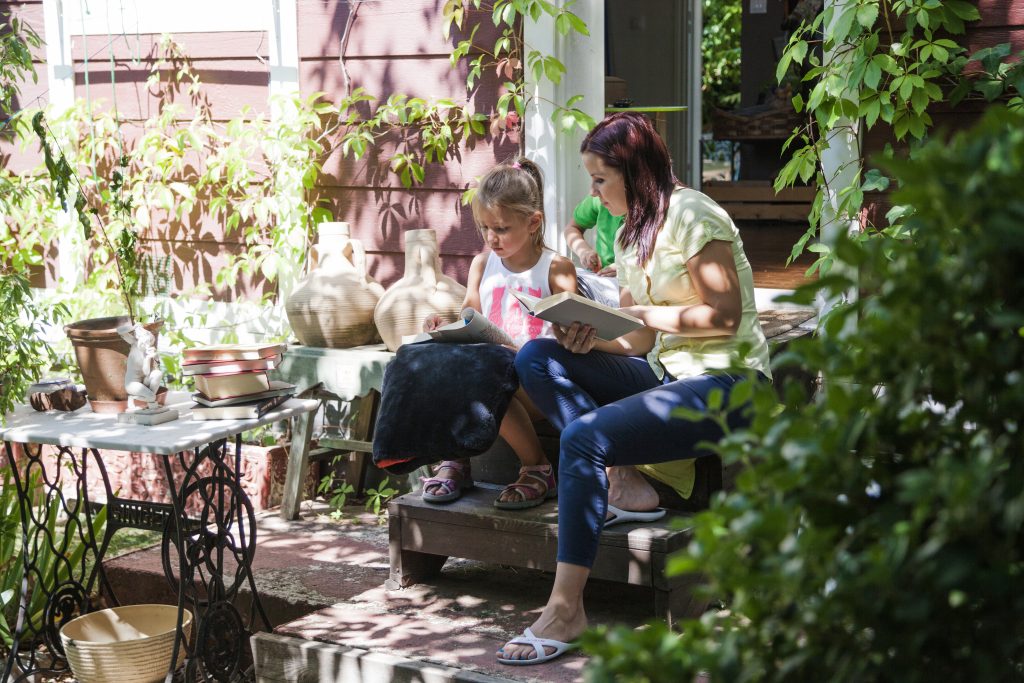Creating Outdoor Retreats in Urban Areas
Daniel Fisher August 18, 2025
Urban living often comes with noise, limited space, and constant motion. Yet, across major cities worldwide, a fresh movement is taking shape—residents are finding creative ways to design outdoor retreats in urban areas. From rooftop gardens to micro green courtyards, the trend reflects a growing demand for balance, wellness, and connection to nature within dense city environments.
This shift is not just about aesthetics—it’s tied to wellness, sustainability, and community. In 2025, the conversation around outdoor retreats in urban areas has accelerated, thanks to innovations in green design, a focus on mental health, and the rise of eco-conscious living.

Why Outdoor Retreats in Urban Areas Matter
City living can be invigorating, but it often comes at a cost. Research has shown that exposure to nature improves mental health, reduces stress, and enhances focus (Bratman et al., 2019). Unfortunately, natural green spaces are often scarce in crowded urban centers.
This is why creating private or shared outdoor retreats is becoming essential. For many, a small balcony filled with greenery or a shared rooftop garden provides a daily reset—an environment where city dwellers can breathe easier, connect socially, or simply step away from the screens and noise.
Key benefits include:
- Improved well-being: Even brief interactions with green spaces can reduce anxiety and enhance mood.
- Sustainability: Green rooftops and vertical gardens contribute to urban cooling, improved air quality, and reduced stormwater runoff.
- Community building: Shared outdoor retreats often double as social hubs, fostering stronger neighborhood connections.
The Rise of Rooftop Retreats
Rooftops have become one of the most popular canvases for outdoor retreats in urban areas. Apartment complexes, hotels, and office buildings are increasingly transforming unused roof space into functional green areas.
Why rooftops work:
- Maximized space: With limited ground-level real estate, rooftops provide untapped potential.
- Panoramic views: Elevated retreats offer city dwellers a visual break from crowded streets.
- Flexible design: Rooftops can host gardens, dining areas, yoga decks, or even small-scale urban farms.
A recent report from the Urban Land Institute (2023) highlights that rooftops designed with greenery not only increase property values but also support urban biodiversity. Cities like New York, Singapore, and Tokyo have introduced incentives for green roofs, making them an emerging staple of urban design.
Small Spaces, Big Impact: Balconies and Courtyards
Not every urban resident has access to a rooftop, but even the smallest outdoor areas are being transformed into personalized retreats.
Popular trends include:
- Balcony gardens with potted plants, hanging herbs, or vertical planters.
- Micro courtyards—tiny, shared green spaces in residential complexes designed for relaxation.
- Portable furniture that adapts to limited space while making outdoor time more enjoyable.
These compact retreats are proof that you don’t need a large footprint to experience the benefits of outdoor living. With smart design choices like foldable tables, multi-use storage benches, and space-efficient greenery, small balconies can feel like complete sanctuaries.
Wellness and Outdoor Living: A Strong Connection
One of the strongest drivers behind outdoor retreats in urban areas is the link between wellness and access to nature.
- Mental health: A 2021 study in Frontiers in Psychology found that urban dwellers who regularly accessed green spaces reported higher life satisfaction and lower stress levels.
- Physical health: Outdoor retreats encourage movement—whether that’s light gardening, stretching, or exercising outdoors.
- Work-life balance: With remote and hybrid work still prominent in 2025, many professionals are using outdoor retreats as home-based workspaces, blending productivity with relaxation.
This aligns with the broader wellness economy, which continues to grow as people prioritize mental clarity and balance in fast-paced urban environments.
The Sustainability Factor
Sustainability is no longer optional—it’s shaping how cities evolve. Outdoor retreats in urban areas are playing a part in this transformation.
Eco-conscious practices shaping urban retreats:
- Native plants that require less water and maintenance.
- Rainwater collection systems integrated into rooftop and balcony designs.
- Energy-efficient lighting powered by solar panels.
- Composting in shared community gardens to reduce waste.
Cities like Paris and Melbourne are adopting policies that encourage green spaces in residential and commercial developments. These initiatives support biodiversity while making outdoor retreats more accessible to all residents.
Technology Meets Outdoor Living
An interesting trend shaping outdoor retreats in 2025 is the fusion of technology and nature. While retreats are designed to be calming and organic, modern tech is helping make them more functional and sustainable.
Examples include:
- Smart irrigation systems that monitor soil moisture and reduce water waste.
- Modular furniture equipped with charging ports for devices.
- Green walls with sensors that track air quality improvements.
- Lighting systems that adapt to natural circadian rhythms, creating an atmosphere that supports relaxation.
This balance of digital innovation and natural design ensures that outdoor retreats fit seamlessly into modern urban lifestyles.
Practical Guide: Creating Your Own Outdoor Retreat in the City
For readers who want to create their own retreat, here are some practical steps:
1. Assess Your Space
- Balcony, rooftop, or courtyard—understand the size, sunlight exposure, and structural limitations before starting.
2. Choose a Purpose
- Relaxation? Gardening? Entertaining guests? Identifying the primary function helps guide design choices.
3. Add Greenery
- Opt for vertical gardens or container plants if space is limited.
- Select low-maintenance plants suited to your local climate.
4. Invest in Comfortable Seating
- Multi-use furniture like storage benches or foldable chairs can maximize comfort and efficiency.
5. Integrate Lighting
- Soft, solar-powered lighting extends usability into the evening while reducing energy consumption.
6. Keep it Flexible
- Use modular furniture or movable planters to adapt your space as your needs change.
7. Make it Personal
- Add decor that reflects your style—outdoor rugs, art pieces, or water features can transform even small spaces.
The Future of Outdoor Retreats in Urban Areas
Looking ahead, urban retreats will likely continue to evolve alongside changing lifestyles and environmental needs. Experts predict that:
- More mixed-use developments will include built-in outdoor retreat spaces.
- Cities will integrate green corridors connecting private retreats with public parks.
- Climate resilience will guide design, with an emphasis on cooling, shading, and stormwater management.
The growing emphasis on sustainability and wellness suggests that outdoor retreats won’t just remain a niche trend—they’ll become a defining feature of urban living.
Conclusion
Creating outdoor retreats in urban areas is more than a design trend—it’s a response to modern challenges of density, stress, and disconnection from nature. Whether it’s a rooftop garden, a small balcony escape, or a shared courtyard, these spaces offer city dwellers a practical way to reconnect with nature, support wellness, and embrace sustainability.
As more residents and city planners recognize the value of these spaces, outdoor retreats are poised to become a standard part of urban life in 2025 and beyond. The transformation highlights how urban design can support healthier, more balanced lifestyles, even in the busiest environments.
References
- Bratman, G. N., Anderson, C. B., Berman, M. G., Cochran, B., de Vries, S., Flanders, J., … & Daily, G. C. (2019). Nature and mental health: An ecosystem service perspective. Available at: https://www.science.org (Accessed: 18 August 2025).
- Frontiers in Psychology. (2021). Urban green space and mental well-being. Available at: https://www.frontiersin.org (Accessed: 18 August 2025).
- Urban Land Institute. (2023). Green roof development in cities. Available at: https://uli.org (Accessed: 18 August 2025).







